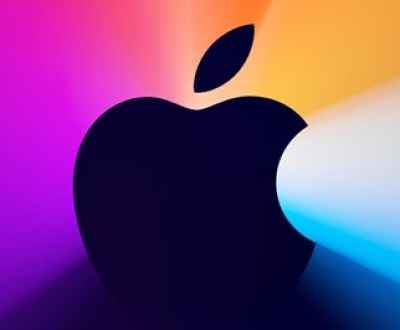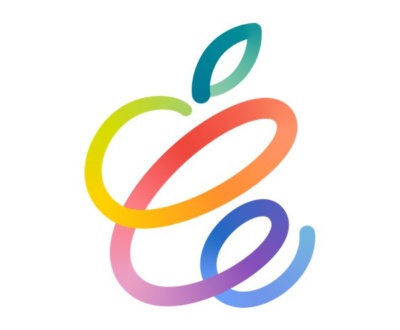You cannot have missed the hype and chatter about 5G, after months if not years of talk we in the UK finally have a working, well of sorts 5G network.
The first to launch is EE, BT’s wireless division, who now offer a 5G service at a price in a limited number of locations.

EEs lowest-priced deal is £54 a month. You will of course need a 5G handset and the choice is limited. EE offer 1 handset from LG, the Samsung S10 and two from companies that you will not have hear off. None are in stock yet. Note no devices from Huawei.
But bear in mind that the EE service buys you only 10GB of data a month, which you will be likely to chew through fairly quickly if you take advantage of the next-generation technology to download lots of media. You could use your entire monthly limit in around 10 seconds if you had peak connection speed. Account holders beware.
For many people, it may make sense to wait – and not just to take advantage of rival offers from Vodafone, which starts its own 5G service in about five weeks.
The two operators are launching in select cities only. EE will start with the UK’s four capital cities – London, Edinburgh, Cardiff and Belfast, alongside Birmingham and Manchester.Ten more cities will also see 5G during 2019, with Glasgow, Newcastle, Liverpool, Leeds, Hull, Sheffield, Nottingham, Leicester, Coventry and Bristol also benefitting from a big boost in data speeds and reliability.
And even there, the connectivity will be patchy, sometimes offering only outdoor connectivity, sometimes none at all – so customers will probably default to a slower 4G signal much of the time.
Mobile coverage: While 5G is expected to play an important role in providing higher speeds and extending capacity at existing mobile sites, it is unlikely that 5G will, in itself, extend the current coverage of mobile networks.
What does 5G offer?
What are the benefits of 5G?
Better connection in busy places

Sometimes in busy places, and during peak times, the internet connection on your phone can slow down. Networks reach their limit when too many people try to connect in the same place at the same time.
With 5G, the network should give you a more reliable connection in the busiest places, so you can video call friends and family, stream sports and download the latest TV show everyone’s talking about – at busy train stations, stadiums and festivals.
Faster speeds, better quality
5G will give you speeds like you’ve never seen before on your smartphone. This means you’ll be able to do things much faster than you currently can using 4G. You’ll be able to reliably stream video at higher resolutions, enjoy higher quality video calls and download content faster – including downloading films in seconds rather than minutes. Want to watch something on a long train journey? You could download an entire box-set while the train’s pulling into the station.
Instant connection
5G gives you a near-instant connection to the content you love most, with very little lag. Whether you’re opening apps and webpages or playing the latest high-resolution game on your phone, everything will feel super-quick. What’s more, a near-instant connection will open up possibilities for exciting new augmented and virtual reality experiences on your smartphone.
Will I need a new phone to use 5G?
Yes – In order to use 5G, you’ll need to get a brand new 5G phone.
How does 5G work?
Whether you’re making a call, sending a text or connecting to the internet, all wireless communications take place over radio frequencies. 5G mainly uses higher frequencies than 4G – and these frequencies are faster and can carry more information. 5G will also support more devices – or SmartThings – being used at the same time.
A 5G network can also be ‘sliced’, which means operators can ‘slice’ parts of the network and dedicate them to specific tasks. For example, one part of the network can be used for phones connecting to the internet and another part can be used for driverless cars.
5G Explained

5G is fifth-generation cellular wireless and the successor to 4G. When most people talk about 5G connectivity, they’re talking about mmWave, or millimeter wave spectrum.
Millimeter wave technology offers a lot of open bandwidth for blazing fast data transfer speeds, but it is highly sensitive to interference from buildings, trees, and other obstacles, which has prevented it from being taken advantage of by cellular companies who have previously focused on low-band and mid-band spectrums for cellular networks.
Accessing mmWave spectrum has only become possible over the course of the last few years due to technological advancements like Massive MIMO, adaptable beamforming, and miniaturization of complex antenna processing functions.
Not all 5G networks are going to use mmWave technology in all areas because it’s best suited to denser urban locations. In rural and suburban areas, 5G technology will be on mid-bands and low-bands, called sub-6GHz 5G. It’s still faster than 4G, but not as fast as mmWave.
So when 5G comes out, there will be some areas with mmWave technology where data transfer speeds will be lightning quick, coupled with other areas that are closer to 4G LTE speeds. Over time, low-band and mid-band 5G speeds should also get much quicker, but know that most talk of 5G focuses on the more limited mmWave spectrum.
How fast will it really go?
The communications watchdog Ofcom suggests that in time 5G could offer speeds of 20Gbps.
That is fast enough to download an ultra-high definition 4K movie in less time than it takes to read its description.
But for now, you should cool your jets.
To start with, the fibre lines EE is using to link each 5G site to its network have a total capacity of only 10Gbps, which must be shared around.
The network has suggested that, on average, users will achieve about 150-200Mbps downloads at launch, with lucky individuals hitting about 1Gbps at quiet times.
So, wait times for such big files will still be measured in minutes rather than seconds.
Even so, this would still be an improvement on the 29.6Mbps that OpenSignal said that EE typically provided via its 4G network.
Of course, there’s another way to measure speed and that is in terms of latency – the lag between sending a command and getting a response.
In time, 5G is supposed to provide latencies of one millisecond or less, compared with the 20-70 milliseconds on offer today.
That will make playing videos games powered by a cloud-based service a more responsive experience and will pave the way for new use cases – such as remote-controlled vehicles, surgical robots, and live-streamed virtual reality.
To start with, however, things won’t be close to that level.
EE says to expect latency of about 20 milliseconds at launch, falling to 10 milliseconds within the next decade.
Is it just about faster phones?
No – though that’s undoubtedly the short-term hook to attract subscribers.
One of the biggest long-term benefits of 5G will be the ability for mobile networks to provide more connections at once.
In theory, 5G will be able to simultaneously support more than a million devices per sq km, a big jump over the 60,000-odd devices that 4G technology maxes out at.
But to make this possible, antennas will be needed all over the place – from lamp-posts to bus shelters, in addition to more of the rooftop masts we’re already used to.
These in turn will support hundreds of thousands of data-capturing sensors that will allow the authorities and businesses to gain deeper insights about behaviour and provide “smarter” services.
What about Huawei?
A shadow hanging over all the networks’ 5G plans is a possible ban on the use of Huawei’s telecoms equipment because of security concerns.
Last month, it looked like the UK was about to green light use of the Chinese company’s 5G antennas and masts – but Prime Minister’s Theresa May’s resignation means things are now less clear.
Barring the company’s infrastructure would prove a major headache for the operators.
EE and Vodafone would have to strip out some of their existing Huawei kit, which does double-duty for both 4G and 5G.
Both have indicated that if their engineers had to replace it, that would slow their ability to roll out 5G.
Telefonica’s O2 hasn’t widely deployed Huawei’s equipment to date but is engaged in a network-sharing agreement with Vodafone, so would still be affected.
And Three has signalled that it plans to use the Shenzhen-based company’s 5G products.
All of which means that while the UK is one of the first European countries to launch 5G, it could still end up taking longer to expand it nationwide than many of its continental counterparts.
Have any other countries launched yet?
Yes. 5G has already begun to roll out in countries like the US and South Korea, albeit in a limited form. For example, US mobile network operator AT&T launched a 5G service in 12 cities at the end of 2018, but the only device offered is a mobile hotspot from Netgear. U.S. operator Verizon switched on 5G in parts of Chicago and Minneapolis, and is offering one compatible smartphone. In South Korea, mobile operators are also offering limited 5G coverage.
When Will Apple Release a 5G Phone?
Multiple rumors dating back months have suggested Apple is going to launch a 5G iPhone in 2020, which means the 2019 iPhones will continue to use 4G.
in 2019, Apple is expected to continue offering iPhones in multiple sizes and at multiple price points to provide customers with choice. 2018 brought the iPhone XS (5.8 inches), the iPhone XS Max (6.5 inches), and the iPhone XR (6.1 inches).
We’re expecting a similar lineup in 2019, perhaps with a continuation of both the iPhone XS and XR devices, with rumors suggesting we’ll see 5.8 and 6.5-inch OLED iPhones along with a 6.1-inch LCD iPhone.
There were questions about whether Apple would be able to secure 5G chips for its 2020 devices given its dispute with Qualcomm, but that litigation has been largely resolved and cleared up and the road to a 5G iPhone in 2020 is much clearer.
Apple won’t be prepared to launch 5G iPhones in 2019 and can’t afford to wait until 2021 as competitors are already launching 5G smartphones, which makes 2020 Apple’s 5G year.
Apple’s Chip Partner – Qualcomm
Apple was originally planning to use Intel chips in its 2020 5G iPhones, but Intel is out of the smartphone chip business and Apple has no choice but to use Qualcomm’s modem chips.

Qualcomm has already released one 5G chip, the X50, and is working on a second, the X55. Qualcomm’s X55 chip will be available later in 2019, and could be the modem chip Apple will use in its 2020 iPhones.
The X55 offers 7Gb/s peak download speeds and 3Gb/s upload speeds, though these numbers are theoretical maximums and actual speeds will depend on carrier network. This chip is Qualcomm’s first 5G chip that supports all major frequency bands, operation modes, and network deployments.
The X55 is also more power efficient than Qualcomm’s X50 chip, which means it will draw less energy and will have less of an impact on battery life when connected to a 5G network.
Rumors suggest that Apple may also use some chips from Samsung, so Qualcomm may not be the only 2020 chip supplier.
Summary
Watch this space. 5G will become important and bring significantly higher speeds to the mobile users. New handsets will be required and these will be in short supply until September 2020 when we expect a 5G iPhone. Apple has the power to drive the market to a large extent.
With a question mark hanging over the 5G equipment from Huawei the network providers will struggle with equipment and designs and this will just slow down the network deployment.
Unless you can dream up a compelling business case for 5G – do nothing for a year.
About us and this blog
We are a digital marketing company with a focus on helping our customers achieve great results across several key areas.
Request a free quote
We offer professional SEO services that help websites increase their organic search score drastically in order to compete for the highest rankings even when it comes to highly competitive keywords.









